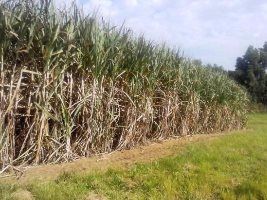
Unica highlighted that 23 plants stopped grinding in the second half of October, most of them in Goiás
Sugarcane crushing in central-southern Brazil reached 31.75 million tons in the second half of October, a drop of around 18 percent compared to the volume processed in the same period of 2015, with a greater number of mills having already closed 2016/17 harvest, the Sugarcane Industry Union (Unica) reported this Wednesday.
By the end of the second half of October, 55 production units had completed the 2016/17 harvest, compared to 18 plants observed in the same period last year.
The entity also highlighted that these 55 units had a worse harvest in 2016/17 than the previous one, with an 11.9 percent reduction in the total volume processed compared to 2015/16.
Compared to the first week of October, sugarcane processing was practically stable, with a drop of just 0.8 percent.
The volume processed in the second half of October was also within what analysts expected. Sucden Financial, for example, projected crushing of 31.7 million tons. A second market source had projected crushing between 30 million and 31 million tons.
PRIORITY FOR SUGAR
The mills in the center-south maintained the tendency to prioritize sugar production, which is more profitable than ethanol, due to good international prices and favorable exchange rates, and also to fulfill previously concluded contracts.
In the second half of October, sugar production fell 6 percent compared to the same half of 2015, while ethanol production fell 29.3 percent.
Sugar production reached 2.05 million tons and ethanol production reached 1.303 billion liters.
In comparison with the first half of October, sugar production fell 8.6 percent and ethanol production fell 7.3 percent.
The reason why sugar and ethanol production fell, while crushing remained practically stable compared to the beginning and end of October, is the concentration of recoverable sugar in each ton of sugarcane (ATR), which lost 8.1 Percent.










